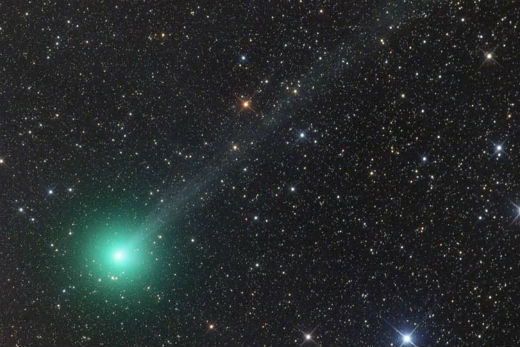There's a green comet passing by planet earth at the moment, on its first visit to the inner solar system for more than five hundred years, and it may be able to be seen by the naked eye this week.
Comet Lovejoy imaged on November 27th by Gerald Rhemann in Austria using a remotely operated 12-inch f/3.6 astrograph in Namibia.
Comet Lovejoy, named after its discoverer Australian astronomer Terry Lovejoy, is called a sun grazer. It was at perihelion, the closest the green comet gets to the sun this time round, on December 16 at a distance of about 1.29 AU. That's about half way from Earth to Mars. It is expected back again in the year 2550.
Comet Lovejoy is going to pass planet earth next week, providing some of the best viewing for those watching from the southern hemisphere.
The comet's direction is from south to north of the ecliptic, the planetary plane of rotation, and has been growing more visible to southern hemisphere viewers in recent weeks.
Nasa's Jet Propulsion Laboratory states Comet Lovejoy will reach its closest position to Earth on January 7, at a distance of about 70.2 million kilometres away.
No one expects comet Lovejoy to become brilliant and sky-spanning, but on a moonless night it may be visible with the unaided eye. Binoculars or a telescope will be needed over the next week with the waxing moon.
The green comet is Terry Lovejoy's fifth comet discovery.
The green colour is thought to be the result of molecules of diatomic carbon (C2) fluorescing in ultraviolet sunlight in the near-vacuum of space. Cyanogen, CN, can add violet to the green, but human eyes are fairly insensitive to violet light.
The blue tint in the comet's ion tail comes from fluorescing carbon monoxide ions (CO+).
Where to look for the comet? Check In-The-Sky for NZ times. Use the ‘planetarium' tab on the sky chart.
https://in-the-sky.org/cometephem.php



0 comments
Leave a Comment
You must be logged in to make a comment.